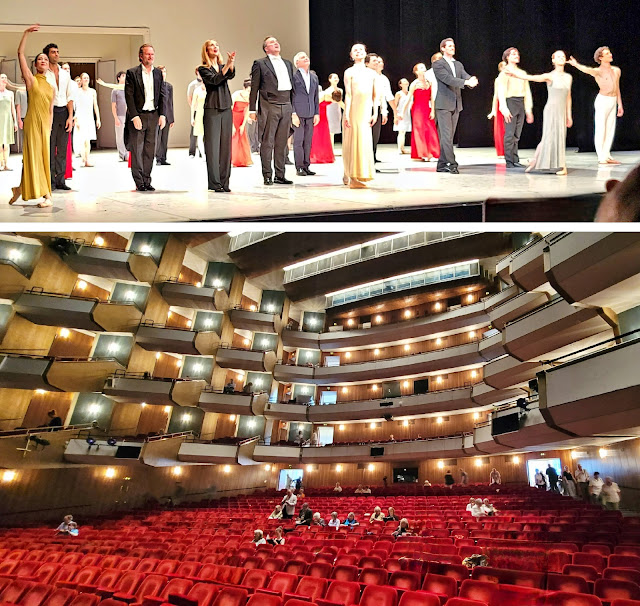
|
| With longtime friend Suzanne and new friend Holly in front of the medieval Holsten Gate in Lübeck, near Hamburg. |
With about two million residents, Hamburg is the second largest city in Germany (after Berlin) and is the largest city in the EU that is not a country's capital.
After my cruise ended here, I took the opportunity to spend a few more days in Hamburg and nearby Lübeck. Hamburg was new to me and was a nice surprise.
Hamburg has more canals than Venice and Amsterdam combined! It also is said to
have more bridges than any city on earth. While Hamburg's canals are not as
beautiful as those in
Venice
and its bridges do not rival the Rialto, Hamburg is in a category of
its own.
You will never see another big city built upon so many miles of canals. And the sheer mass of nonstop rows of tall brick buildings rising up out of the water is an arresting, extraordinary sight.
You will never see another big city built upon so many miles of canals. And the sheer mass of nonstop rows of tall brick buildings rising up out of the water is an arresting, extraordinary sight.
Hamburg's huge city hall opened in 1897 when Hamburg was an independent
city-state within German confederations. Hamburg was quite prosperous during
its days as a key city in the Hanseatic League and continued to be so on
through to today. It is by far the wealthiest of the 16 German states.
Bernstein Dances was being performed at the State Opera House.
Created by John Neumeier, the artistic director of the Hamburg Ballet, the
episodes echo elements of the life of Leonard Bernstein. Superb singing and
stunning dancing.
So much for ballet, what can beat model trains? Hamburg is home to "Miniatur
Wonderland," two large floors filled with fantastic, detailed, creative
dioramas of scenes drawn from all over Europe.
Not only do the trains run, but cars and trucks "drive" around on the little roads, lights come on during periodic "nights," and planes taxi from their gate to the runway and "fly" out of and into this tiny airport (shown above). Model trains were a hobby when I was a kid, so I loved this amazing place.
Not only do the trains run, but cars and trucks "drive" around on the little roads, lights come on during periodic "nights," and planes taxi from their gate to the runway and "fly" out of and into this tiny airport (shown above). Model trains were a hobby when I was a kid, so I loved this amazing place.
About an hour from Hamburg is the another city that was part of the Hanseatic
League: Lübeck (pop. 220,000). It still has a number of medieval buildings that
survived modernization and bombing.
Walking around Lübeck with former colleague Jed and Suzanne (shown in the first photo) who now live in Germany to
follow
the opera career of their son.
Lübeck was having a parade (I forget why) and when I arrived I saw a Kurdish
youth group getting much applause as they performed traditional dances. It
struck me as an interesting juxtaposition between medieval Europe and 21st
century Europe.












